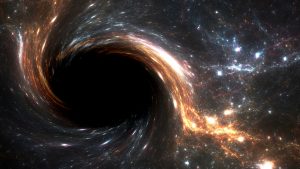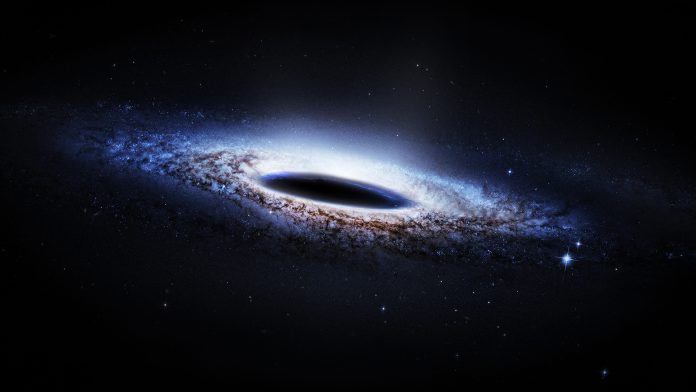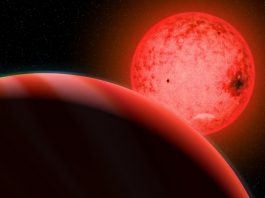A rapidly growing black hole has been discovered in one of the most extreme galaxies known in the very early Universe.
The discovery of the black hole, made by astronomers from the University of Texas and the University of Arizona, will provide new insights into the formation of the very first supermassive black holes.
The new work, ‘ALMA Confirmation of an Obscured Hyperluminous Radio-Loud AGN at z=6.853 Associated with a Dusty Starburst in the 1.5 deg2 COSMOS Field,’ is published in Monthly Notices of the Royal Astronomical Society.
The galaxy containing the new supermassive black hole is extreme
The team used observations taken with the Atacama Large Millimeter Array (ALMA), a radio observatory sited in Chile, to determine that the galaxy – COS-87259 – forms stars at a rate 1,000 times that our own Milky Way and contains more than a billion solar masses worth of interstellar dust.
Due to this intense burst of star formation, and the growing supermassive black hole at its centre, COS-87259 shines bright.
The black hole is thought to be a new type of primordial black hole, which is heavily covered by cosmic ‘dust’. This causes almost all of its light to be emitted in the mid-infrared range of the electromagnetic spectrum.
This growing supermassive black hole, often referred to as an active galactic nucleus, was also found to generate a strong jet of material moving at near-light speed through the host galaxy.
What is a black hole and how are they formed?
A black hole is a location in space where light cannot get out due to a strong gravitational pull. As no light can escape, black holes are invisible. Black holes come in a variety of sizes, but like the black hole observed by the researchers, the largest ones are considered to be ‘supermassive’, having a mass of more than one million times that of our Sun.
Today, scientists have found proof that supermassive black holes are at the heart of almost every galaxy. It is generally believed that supermassive black holes were formed at the same time as the galaxy they are in, but the specific formation of a supermassive black hole is still a mystery for astronomers because many were discovered when the Universe was very young. In this case, the black hole is observed just 750 million years after the Big Bang – approximately 5% of the current age of the Universe.
The discovery sheds light on the very early Universe
This new black hole was identified over a relatively small patch of the sky typically used to detect similar objects – less than ten times the size of the full moon. This data suggested that there could be thousands of similar sources in the very early Universe, a result completely unexpected from previous data.

Previously, the only other class of supermassive black holes known in the very early Universe was quasars, which are active black holes that are relatively unobscured by cosmic dust. Quasars are extremely rare at distances similar to COS-87259, with only a few tens located over the full sky.
The astronomers’ discovery of COS-87259 and its black hole sheds light on the abundance of very early supermassive black holes and the types of galaxies in which they typically form.
Ryan Endsley, the lead author of the paper and now a Postdoctoral Fellow at The University of Texas at Austin, said: “These results suggest that very early supermassive black holes were often heavily obscured by dust, perhaps as a consequence of the intense star formation activity in their host galaxies. This is something others have been predicting for a few years now, and it’s really nice to see the first direct observational evidence supporting this scenario.”
In more local, present-day Universe, similar types of objects have been found. In the Arp 299 system, for example, two galaxies are crashing together, which is generating an intense starburst as well as heavy obscuration of the growing supermassive black hole in one of the two galaxies.
Endsley added: “While nobody expected to find this kind of object in the very early Universe, its discovery takes a step towards building a much better understanding of how billion solar mass black holes were able to form so early on in the lifetime of the Universe, as well how the most massive galaxies first evolved.”









